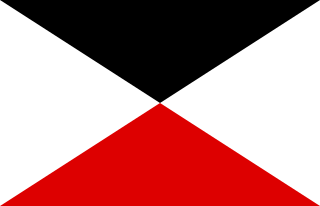
The South African 3rd Infantry Division was an infantry division of the South African Army during World War II.

The Russian Imperial Guard, officially known as the Leib Guard were military units serving as personal guards of the Emperor of Russia. Peter the Great founded the first such units following the Prussian practice in the 1690s, to replace the politically motivated Streltsy. The Imperial Guard subsequently increased in size and diversity to become an elite corps of all branches within the Imperial Army rather than Household troops in direct attendance on the Tsar. Numerous links were however maintained with the Imperial family and the bulk of the regiments of the Imperial Guard were stationed in and around Saint Petersburg in peacetime.

The Japanese Imperial Guard is the name of two separate organizations dedicated to the protection of the Emperor of Japan and the Imperial Family, palaces and other imperial properties. The first was a quasi-independent branch of the Imperial Japanese Army which was dissolved at the end of World War II. The second is the Imperial Guard Headquarters, a civilian Imperial Guard formed as part of the National Police Agency of Japan.
This article covers the Japanese garrisons on the by-passed Pacific islands from 1944 to 1945, including the Japanese mandated territory of the South Pacific Mandate.

The Guards Corps / GK was a corps level command of the Prussian and then the Imperial German Armies from the 19th Century to World War I.
The Order of Battle for the Battle of South Guangxi by country is as follows:
The Guards Mixed Brigade was a military unit of the Imperial Japanese Army.

The Imperial Japanese Army's 2nd Guards Division was renumbered from the Imperial Guards Division in June 1943, when the 1st Guards Division was activated.

The Guards Cavalry Division (Garde-Kavallerie-Division) was a unit of the German army that was stationed in Berlin. The division was a part of the Guards Corps (Gardekorps).

The XVIII Army Corps / XVIII AK was a corps level command of the German Army before and during World War I.

The XIX Army Corps / XIX AK was a Saxon corps level command of the German Army, before and during World War I.

The XVI Army Corps / XVI AK was a corps level command of the German Army before and during World War I.

Ōdera Yasuzumi was a general in the early Imperial Japanese Army, and the highest ranking casualty on the Japanese side in the First Sino-Japanese War.

The XXI Army Corps / XXI AK was a corps level command of the German Army, before and during World War I.

The VI Army Corps / VI AK was a corps level command of the Prussian and then the Imperial German Armies from the 19th Century to World War I.

The V Army Corps / V AK was a corps level command of the Prussian and then the Imperial German Armies from the 19th century to World War I.
The 1st Siberian Army Corps was an elite unit of the Imperial Russian Army. It was raised in May 1900 and disbanded in August 1918.
The 126th Division was an infantry division of the Imperial Japanese Army. Its call sign was the Resolution Division. It was formed 16 January in Mishan as a triangular division. It was a part of the 8 simultaneously created divisions batch comprising 121st, 122nd, 123rd, 124th, 125th, 126th, 127th and 128th divisions. The nucleus for the formation was the 12th border guards group in Miaoling fortress, Mizuki fortress garrisoned by parts of the 11th independent border guards group, parts of 3rd cavalry brigade and left-behind elements of the 25th Division. The 126th division was permanently assigned to 5th army.







